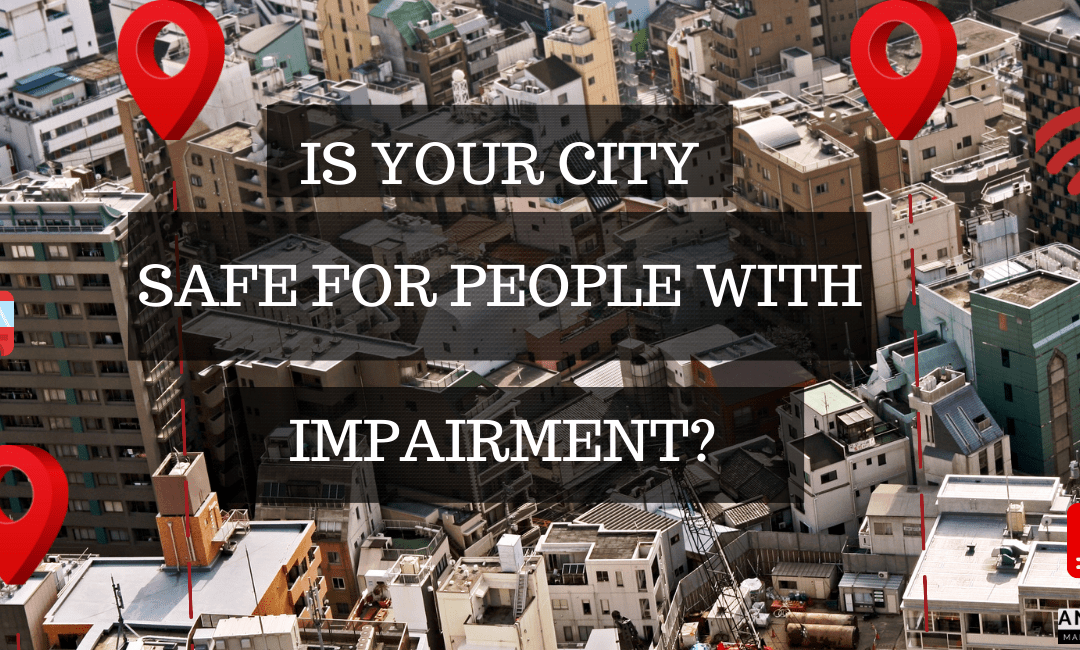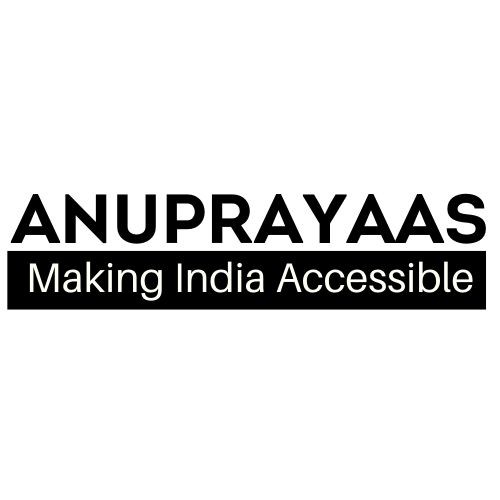As a person with disability travelling can present various kinds of challenges but the biggest difficulty is Mobility Challenges. An accessible and mobile-friendly environment is useful for everyone, not only the person with an impairment. Have you ever paid attention to your walking difficulties? If some of you cross the roads or walk on the streets safely every day, for others their life is in question at each intersection. This article will assist you with improving the mobility challenges that pedestrians face as far as common safety, particularly for persons with any kind of impairment. You won’t ever see your crosswalks similarly again!
- In the growing traffic chaos, to ease traffic congestion, pavements are getting convert into roads. This is awful for all the pedestrians.
- Sidewalks/pavements are built for the walking ease of pedestrians, but later on, most of the manholes are dug in it. Consequently, there are a lot of deadly excavations out there standing by to trap innocent walkers.
- From here you can find out how difficult it is to walk on pavement for a person with visual impairment when it is so hard for a person who can see.
CITY ANALYTICS: Sidewalk Vendors & Mobility Challenges

Statement- The sidewalk is a road facility specially built for pedestrians, to make their walking safe and comfortable. Vendors occupy all of the streets accordingly, pedestrians have to walk on the roads which is very dangerous. Therefore, the reduction of walking space due to their vending activity forces persons to walk off the sidewalk. People do not even complain about such issues as purchasing goods (fruits, vegetables to electronic items, helmets, etc.) from street vendors is convenient. Generally, there are some other sidewalks hurdles such as;
- Welding work in the sidewalk
- Restaurants dishwashing on the sidewalks
- Bike/scooter dealerships display various models on the sidewalks, etc.
Conclusion – There should be a separate market for vendors for only vending activities. Some guidelines should be drawn, with a helpline/complaint number so that information about any illegal vending activity can be given to the authorities or police. Indeed, People should also take the matter into their hands, if any vendor is seen on the sidewalks, they should immediately complain.
-
Inability to Read Street Names
Statement- After passing all the mobility challenges, when the person with visual impairment reaches a place. It takes a lot of effort to know the name of the street. They have to stop a passerby and ask the name of the place, mostly they get fooled by people. Furthermore, this activity makes them believe that taking help from strangers is not desirable. This is very common when they get lost in unfamiliar places.
Conclusion- While traveling in public transport there should be an announcement system to let everyone know the street name without visualizing it. All modes of transport and stations should have an annotation system. So that, the location and the route of transport can be easily known. The name of the station should also be written in braille on the signboard.

-
Lethal Manholes in Pathways

Statement- The circular holes in the sidewalks or pedestrian crossings are the biggest hurdles in mobility for people with visual impairment. For pedestrians, open or uncovered manholes are probably the biggest enemies.
Most of the time workers forget to cover it back after repairing it. Many incidents get reported in the newspaper every second day about
- people dropping in manholes,
- people stuck inside manholes for hours, etc.
A few days back, I came across a pavement where a manhole was blocking the directional tactile blocks.
Conclusion- Authorities are working hard to make public infrastructure accessible for pedestrians with visual impairments. Likewise, they should take care that no manhole should come in the middle of the tactile path(raised surface, dots, or markers which get detected by visually impaired’s stick while walking; assist in walking). Anyone who sees an open/uncovered manhole should complain about it to Municipal Corporation rather than ignoring it.
-
Zebra Crossings Without Signal Lights
Statement- Zebra crossing without traffic lights is very dangerous especially for persons with visual impairment. Mobility on zebra crossing is mainly affected due to a lack of sound signals or traffic lights. Meanwhile, most of the time we get stuck in the middle of pedestrian crossings, with no clue of getting anywhere with some continuous horn blasting.
Conclusion- Every zebra crossing should have lights. In addition, there should also be sound signals or beepers so that person with visual impairment can cross the road independently and comfortably.

-
Using Escalators

Statement- Using escalators is also very challenging, as they don’t have any particular signs informing their upward and downward movement. Moreover, this leads to mistakes that turn out to be dangerous. Due to the lack of illuminating strips on the stairs of escalators, it becomes difficult for them to detect the steps and movement of escalators.
Conclusion- Escalators should have illuminating strips. At the starting point of the escalator, there should be a pole with a radiant and braille signboard to indicate the upward and downward direction.
-
Walking into Unmarked Glass Doors
Statement- The presence of a metal/wooden door or wall can be recognised but glass doors are hard to recognise. Although, this leads to a sudden bump into it while walking alone.
Conclusion- To minimise this unusual bumping now most of the showrooms/shops have automatic doors. As a result, To avoid this walking into glass doors or people there should be some reflection strip on the glass for low vision. All the glass doors should be automatic or there should be a gatekeeper in showrooms to open the glass door.

IS PEDESTRIAN SAFETY REALLY A CONCERN – Mobility Challenges?
Pedestrian safety is very important. Even if we are travelling via our own vehicles to a place, we are all pedestrians at the end.
As reported by WHO, numerous pedestrians get killed in road accidents. A lot of people become physically impaired for life due to severe injuries in road accidents because of traffic-related crashes every year. Moreover, It’s important to realise that traditionally we have built out an environment to exclude certain people. Impairments are not inherently possessed by the individual they are shaped by the barriers we have put up.
Key challenges leading to mobility obstacles are;
- Driver’s behaviour – using a mobile phone while driving, drink & drive, over speed, etc.
- Public Infrastructure – lack of pedestrian facilities in the walkway, uncovered manholes in walkways, etc.
MISCONCEPTION

Often the concept of providing accommodations to a person with any kind of impairment is misunderstood as making them dependent on society to help them. When the fact of accommodating impairments is pretty much the opposite of that. Meanwhile, some people with visual impairment do require caretakers or guide dogs to help them with their day-to-day lives. The goal of accessible universal design is to provide independence for people with impairments.
- From the perspective of a person with visual impairment, one of the most challenging aspects is mobility. Moreover, being conscious about safety while travelling alone or independently.
- From the perspective of a person with visual impairment, one of the most challenging aspects is mobility. Moreover, being conscious about safety while travelling alone or independently.
- Good Road safety practices can be very helpful in improving the situation and minimising the rate of road accidents.
.
- While walking alone person with a visual impairment uses audio and tactile information. Subsequently, Some of them walk with low visual directions. Almost all of us have once in a lifetime experience that frightening feeling while crossing the road on zebra crossing without the traffic lights.
- While walking alone person with a visual impairment uses audio and tactile information. Subsequently, Some of them walk with low visual directions. Almost all of us have once in a lifetime experience that frightening feeling while crossing the road on zebra crossing without the traffic lights.
- Moreover, measures should be taken to ensure pedestrian safety to eliminate outdoor obstacles on roads, in schools, workplaces, etc.
In India, the accessible India Campaign has been started in 2015 for making India accessible for all people with impairment. Anuprayaas is also working with the same mission, to make all the public infrastructures accessible in India. An accessible building or road is in which a person can go comfortably without any hindrance. On the contrary, this covers the entire indoor structure such as including stairs, ramps, corridors, entry gates, parking, pavements, restrooms, etc., and outdoor structures such as signboards, lighting, reflectors, etc.
Government must keep in mind all the accessibility aspects of the environment while constructing a new map. An accessible or safe city is all about mobility with ease(roads, signage, transportation sector, etc.), build environment (buildings, toilets, etc.), and regular updates/Information ecology.

By building spaces that accommodate people with various impairments, we can provide them with economic empowerment and independence. In most cases, we will also improve the quality of life for just about everybody. Hence, If we all look at it this way. Accessible designs may just be one of the most morally and fiscally responsible things we can do. So what do you think? What are some design improvements that would benefit accessibility and usability in your life- whether it’s at the home, office, school, or public space?

